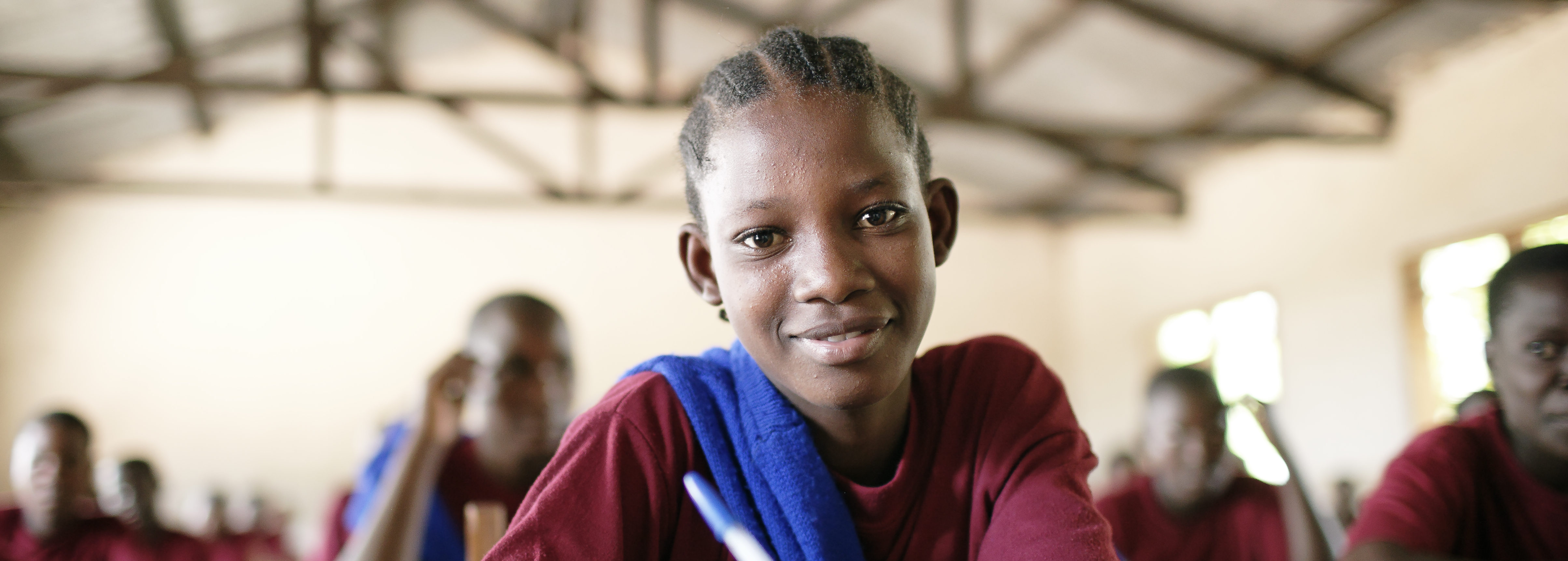 Produced by Women Deliver
May 9, 2016
Alice Albright
Produced by Women Deliver
May 9, 2016
Alice Albright
Since 2000, when the Millennium Development Goals (MDGs) were adopted, worldwide gender disparity in primary education has narrowed dramatically and, in some countries, disappeared altogether. It turned out that a life without the ability to read, write or do math was not an immutable condition for millions of girls and women, as it had been a decade and a half ago.
One of the biggest factors behind this transformation was that the world – mobilized around the MDGs and in collaboration with organizations like the Global Partnership for Education (GPE) – decided to act on that commitment. The result: millions more girls – and boys, too – got into school and received a good primary education.
We will need much more of that kind of resolve to finish the job of educating the world’s girls. During this week’s Women Deliver conference, Julia Gillard, GPE Board Chair, will highlight that educating girls translates into greater economic prosperity for them, their families and their countries, better health outcomes for themselves and their children and a far lower likelihood that they’ll be married too early in life.
As encouraging as the progress has been since 2000, an estimated 124 million children are still out of school, and 63 million of those children are girls. And we are keenly aware that while millions of children get a good basic education, too many millions reach grade 4 without learning how to read and write.
In about 80 countries, progress on education gender parity has leveled off, and in 30 countries, even when many girls go to primary school, they still don’t master basic literacy and numeracy skills by the time they leave. Only a fraction of girls completing primary school go on to secondary school.
The vision of the new UN Sustainable Development Goal on education is that “all girls and boys [will] complete free, equitable and quality primary and secondary education” by 2030. This will be even tougher to attain than the MDGs because a large part of the remaining out-of-school girls are the hardest to reach, facing formidable barriers. Those barriers include:
1. Social and cultural factors. In many countries families expect their daughters to help at home with cleaning, cooking, taking care of younger siblings and helping on family farms. When a poor family weighs these needs against the seemingly slight opportunity of a paying job when a daughter is educated, keeping her at home is a more likely outcome than sending her to school. Many families consider only their sons as the breadwinners of their own future families and the supporters of their aging parents, which is an incentive to educate boys. Also, in many cultures, marriage means that a daughter becomes part of her husband's family, so they feel little, if any, motivation to educate girls.

2. Early marriage. For girls married off as children at times well under the age of 18 – often without choice or consent – the prospect of remaining in formal schooling is usually remote. Compared to those married at the age of 18 or older, girls who marry as young as twelve are 21 percent less likely to go to secondary school. Not surprisingly, education can have a powerful impact on reducing child and early marriage. Girls with higher levels of schooling are much less likely to have to marry early or have children at an early age.
3. The opportunity cost of school. For many families, especially the poorest, the cost of sending a daughter to school seems like an extra burden, especially when schools require even nominal direct and indirect fees. When countries eliminate tuition fees or the cost of transportation, books, uniforms or security, they can alter parents’ views of the costs and benefits of sending their daughters to school. Scholarships for girls or take-home rations of food or oil are also proven approaches to get more girls in school and remain in school.
4. Lack of separate toilets for girls. About 10 percent of African girls miss about 20 percent of their school days due to menstruation. So for any country hoping to boost the number of girls going to and staying in school, it is imperative to equip schools with water for drinking and washing, separate sanitary facilities and even sanitary napkins so girls can continue to go to school during their menstruation.
5. Lack of qualified female teachers. Trained and highly qualified teachers are essential to ensuring that students – girls and boys – really learn. And girls perform better in school and are less likely to drop out when they have competent women teachers who encourage them to succeed and act as positive role models.
We have a pretty good idea what it takes to lower these barriers. But in the absence of sufficient will and resources to put those proven interventions to work, not much will change.
Together, developing countries and their international partners can and are making a difference. They must support strong education planning and funding – from both domestic and international sources- that helps girls, especially the most marginalized, get the quality education they need and deserve.
Alice Albright is Chief Executive Officer of the Global Partnership for Education, which supports more than 60 developing countries to ensure that every child receives a quality basic education, prioritizing the poorest and most vulnerable and those living in fragile and conflict-affected countries. For more background on the barriers to girls’ education, please see this infographic.


